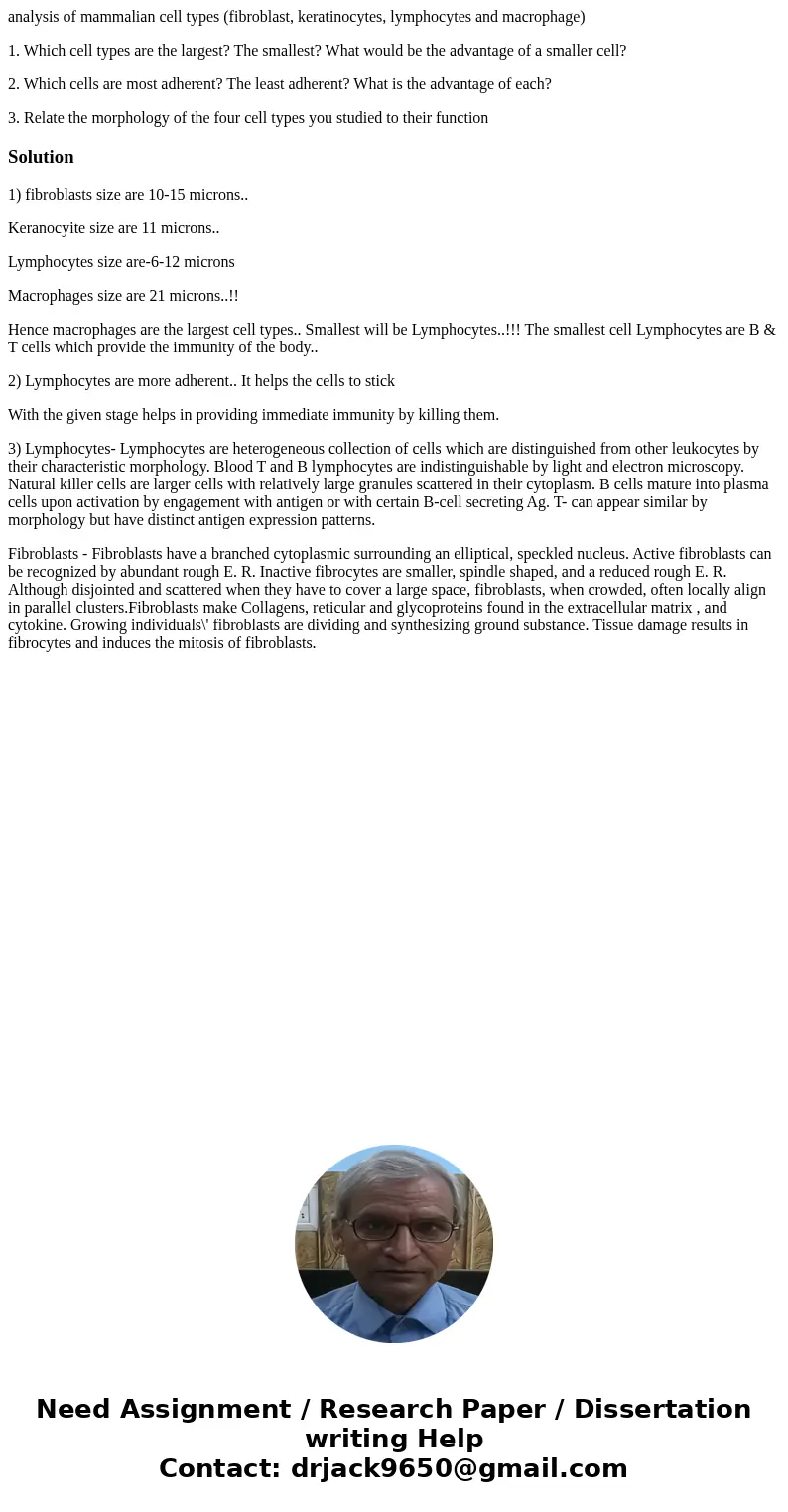analysis of mammalian cell types fibroblast keratinocytes ly
analysis of mammalian cell types (fibroblast, keratinocytes, lymphocytes and macrophage)
1. Which cell types are the largest? The smallest? What would be the advantage of a smaller cell?
2. Which cells are most adherent? The least adherent? What is the advantage of each?
3. Relate the morphology of the four cell types you studied to their function
Solution
1) fibroblasts size are 10-15 microns..
Keranocyite size are 11 microns..
Lymphocytes size are-6-12 microns
Macrophages size are 21 microns..!!
Hence macrophages are the largest cell types.. Smallest will be Lymphocytes..!!! The smallest cell Lymphocytes are B & T cells which provide the immunity of the body..
2) Lymphocytes are more adherent.. It helps the cells to stick
With the given stage helps in providing immediate immunity by killing them.
3) Lymphocytes- Lymphocytes are heterogeneous collection of cells which are distinguished from other leukocytes by their characteristic morphology. Blood T and B lymphocytes are indistinguishable by light and electron microscopy. Natural killer cells are larger cells with relatively large granules scattered in their cytoplasm. B cells mature into plasma cells upon activation by engagement with antigen or with certain B-cell secreting Ag. T- can appear similar by morphology but have distinct antigen expression patterns.
Fibroblasts - Fibroblasts have a branched cytoplasmic surrounding an elliptical, speckled nucleus. Active fibroblasts can be recognized by abundant rough E. R. Inactive fibrocytes are smaller, spindle shaped, and a reduced rough E. R. Although disjointed and scattered when they have to cover a large space, fibroblasts, when crowded, often locally align in parallel clusters.Fibroblasts make Collagens, reticular and glycoproteins found in the extracellular matrix , and cytokine. Growing individuals\' fibroblasts are dividing and synthesizing ground substance. Tissue damage results in fibrocytes and induces the mitosis of fibroblasts.

 Homework Sourse
Homework Sourse